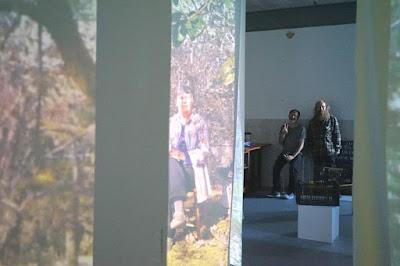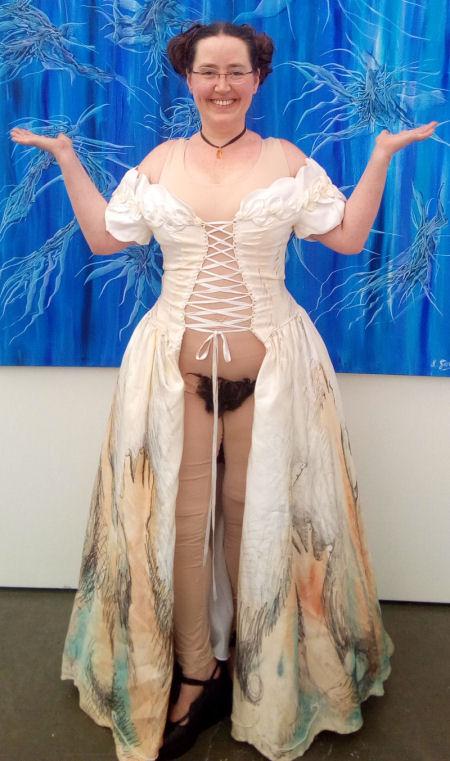I have this huge big massive stick of graphite. I mean it's about the size of a Landjaeger sausage. And soft. I keep it wrapped up in leather so I have something to hold it by without sliding around in the graphite, myself. And I use it to attack my work. The giant smudgy dark and soft and hard lines it makes are as enigmatic as my feelings.
The biggest reason I'm a hands-on materials artist is emotion. I use art to deal with my emotion, so my art is usually pretty expressive. There's a lot that comes out of the body – feeling through physicality that then gets transferred to the work. I remember my highschool art teacher encouraging me to paint by just holding the very end of a long paintbrush, and I struggled hard with that. I struggled to keep control, until I grew up and realized that she was right: when the conscious mind loses control, the unconscious is still in there, and finally shines, with all its crazy, unpredictable ways. Emotions are freed.
I have an autoimmune disease that has never been formally diagnosed but has been explored for decades by my faithful doctor. My symptoms shift and change and I've been through all kinds of potential diagnoses and healing modalities. The one thing I can tell you for certain is when I'm emotionally distressed my body reacts with inflammation. So my doctor sent me to a psychologist who explained to me that my body was harbouring the emotions I wasn't letting out, packing them into various places to manifest as inflammation and dysfunction.
So these days I let the emotions out. I put on the music that either inspired the piece I'm working on or that speaks to the feeling of it; I dance and sing and shout in my studio, I scribble and slash and hit and often push the material I'm using into the substrate with my bare hands. I laugh and often cry. I can't tell you how many times I've left the studio with paint or graphite in my hair and on my face from wiping away tears. I don't care anymore about keeping some kind of respectable appearance. I care that I put everything I had into the piece. I care about getting the damn emotions out of my body and onto the surface or into the dress, or into the words I'm writing.
I hope my emotions reach people. I hope I give people a space to feel and to express and become. I hope we can all find more spaces to emote, to share, to live and love and cry together.
Originally published in September, 2018

